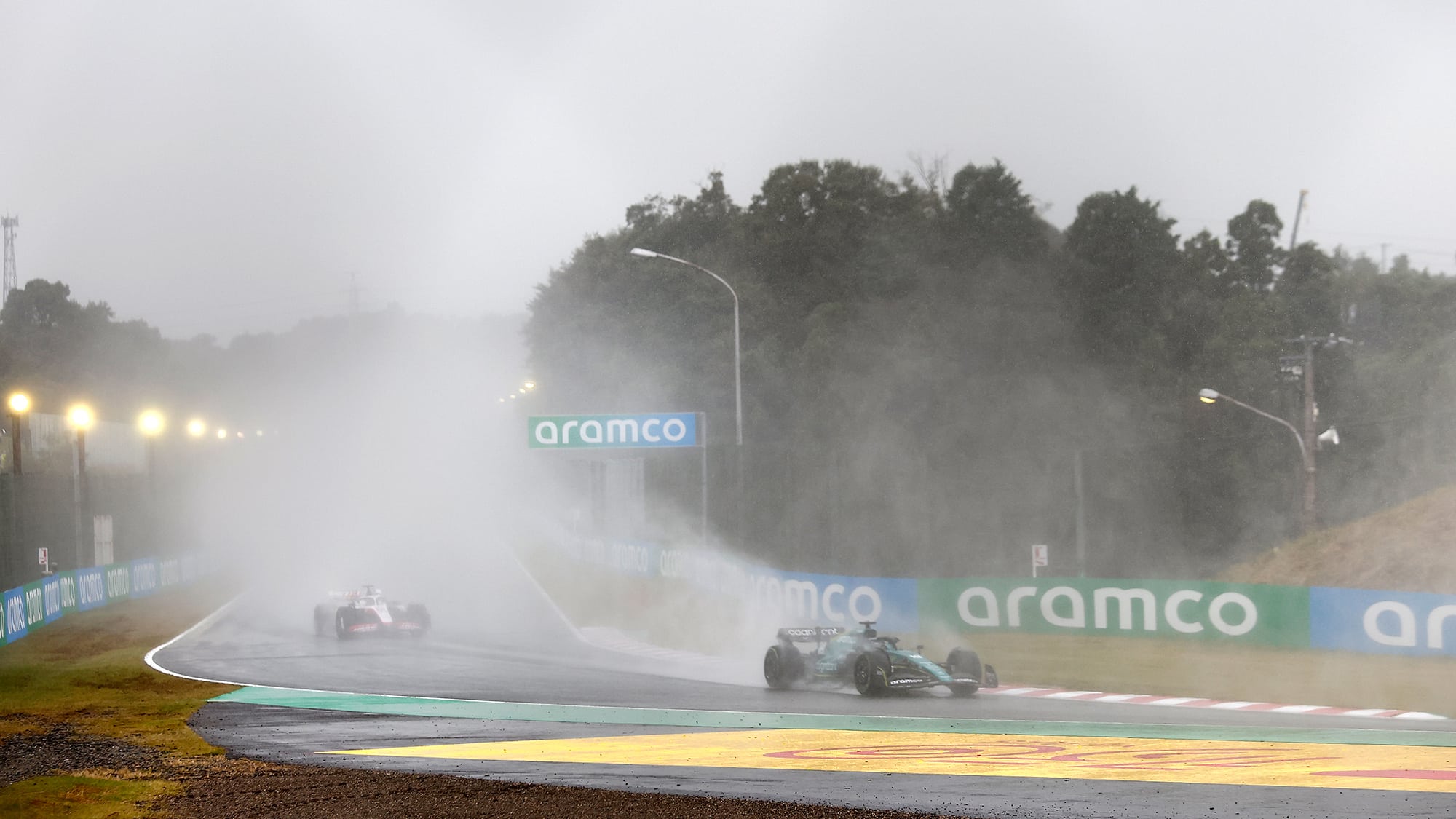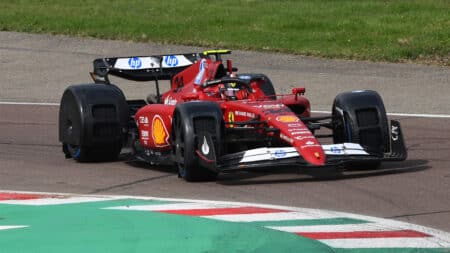The intermediates are a familiar sight when the rain falls on grand prix weekends, but the same can’t be said for the blue-walled wets. When rain is heavy enough for the extreme tyres, a red flag is almost always a formality.
That’s less to do with any tyre failings and much more down to the design of the current generation of Formula 1 cars, which are bigger than before, with aerodynamics that are meant to promote overtaking — but which cause significant issues when rain starts falling.
What is wrong with Pirelli’s wet tyres? They’re too effective
The new 18in wheels brought in alongside the larger 2022 cars have naturally resulted in larger tyres. This has meant that Pirelli’s current crop of full wets can shift over 85 litres a second at 300 km/h (186mph), more than double the capacity of intermediates.
F1 cars have always thrust water into the air, reducing visibility for following drivers, but the effect is multiplied with the current generation. As well as an increase in diameter, the tyres are also wider too: 405mm compared to the 325mm-wide tyres used until 2017.

A curtain of spray hangs in the air at Suzuka as a line of cars go through
Aston Martin
This all results in more spray, and that’s not all. The water droplets are also now directed higher. Technical regulations introduced for the 2022 season create powerful upward air flows from the bodywork and the diffuser at the rear of the car, designed to direct turbulent ‘dirty’ air above any trailing cars, enabling them to follow more closely, promoting more overtaking.
However, this also carries the spray far higher too, forming a curtain of water that severely restricts what drivers can see. Air channelled under the car to generate ground effect is also thought to pick up surface water and thrust it upwards when it exits the diffuser. In these conditions, drivers have regularly complained of feeling unsafe in near-zero visibility
Faced with these complaints, officials often take a cautious approach so delays and stoppages in heavy rain have become inevitable — if accidents don’t bring out the red flags first.
Teams indicate that they struggle to set their cars up for wet weather, given the key role played by ground effect, which requires a low ride height for maximum efficiency.
That ride height has to be raised when there’s standing water to prevent cars floating on surface water, greatly disrupting aerodynamic performance and cooling of the post-2022 cars: engineers face a near-impossible balancing act to optimise downforce and grip levels, while drivers are left with cars that are lumbering at low speeds, easy to lose control of, and susceptible to skidding off over puddles.
Will F1 wheel arches enable racing in heavier rain?
Cars sliding off the circuit and lengthy red flag periods are nobody’s idea of a good race weekend. Racing’s governing body, the FIA, has acknowledged the issues of wet weather visibility and commissioned a study into whether adding wheel arches to F1 cars for wet races would solve the spray problem.
A prototype design will be tested on a dampened section of Silverstone following the British Grand Prix to see how effective it is. If it is eventually given the green light, it is thought that it would be fitted to all F1 cars in “extremely wet” conditions. The standardised devices would be installed either before a race or during a red flag and are likely to cover the front and rear wheels.


